The sunrise on Monday, May 12 was blocked by low atmospheric clouds.

And the rest of the sky turned an odd violet-ish color.

We’d decided to move around the corner, where it was more protected from the wind/wind chop (the blue dot on the map that we’d posted upon arrival at Highbourne Cay). We had to bring in the flopper stopper no matter what, as they weren’t meant for use in motion. Even though it was a short ride, we decided it was best to bring up the dinghy, too.
We pulled up anchor at 0815. If we’d followed a rhumb line, it would have been less than a 1/2 nm mile trek. However, due to the fact that the water was mostly shallow, with few spots deep enough for Kosmos, Eric had to plot a 6.5 nm trip with 30 way-points. It took lots of twisting and winding to avoid the shallow spots.
A little over an hour later, we successfully anchored. Here were a couple of photos of our new view.
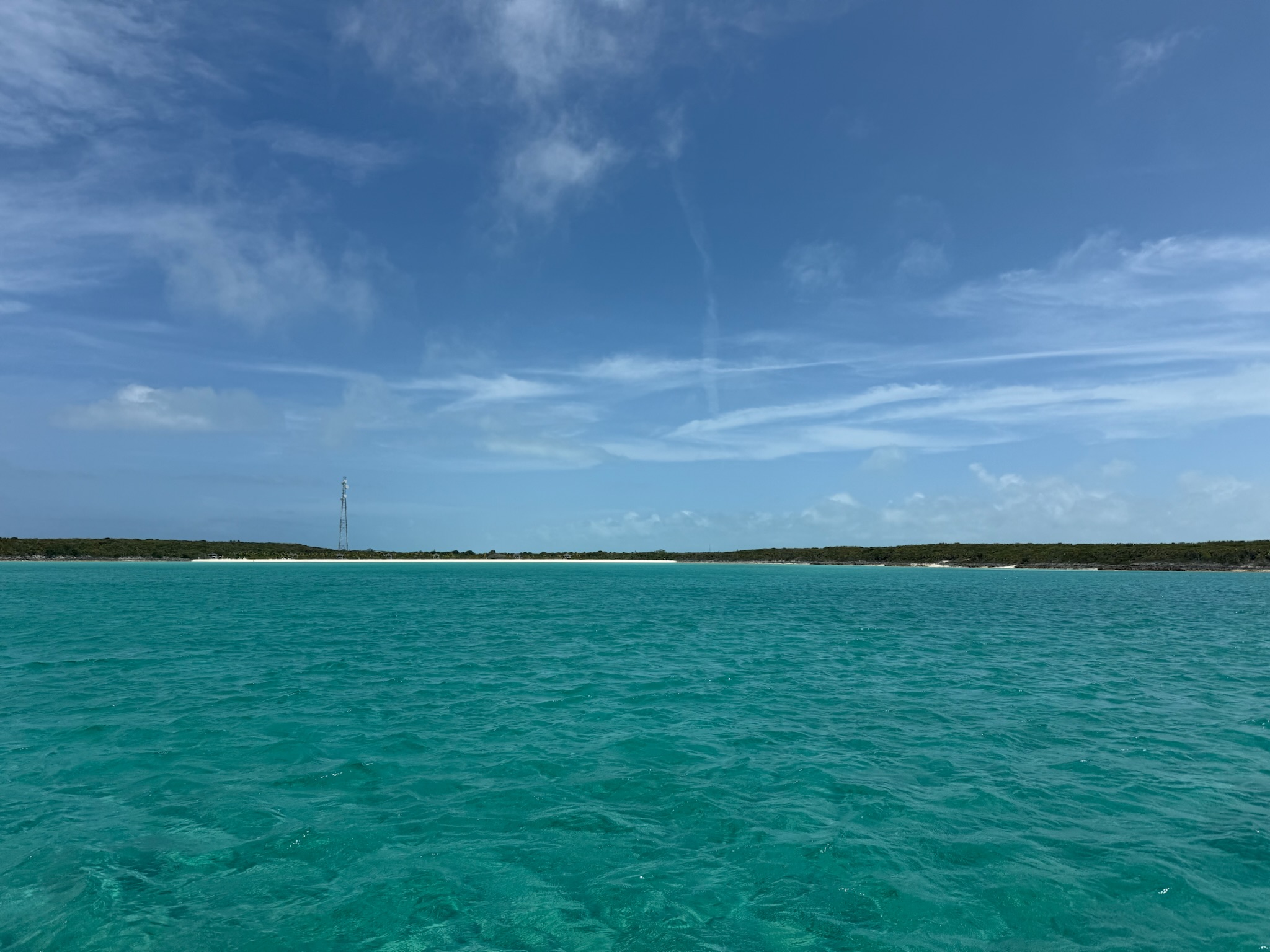
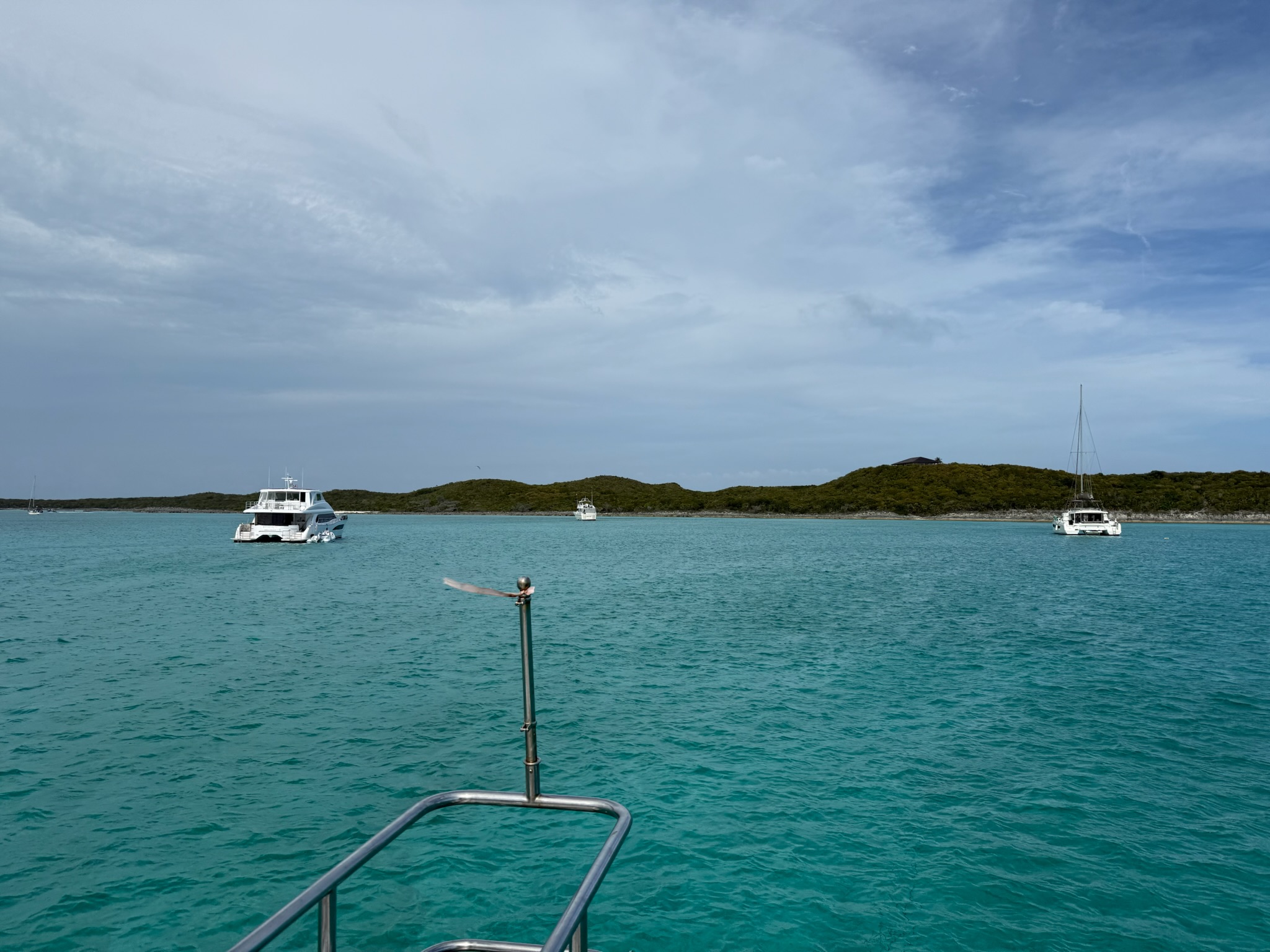
We were relieved that we’d no issues along the way. We were also glad that we’d moved because this was a more comfortable spot, and we knew the spot we were at before was going to continue to get more and more uncomfortable. But, that said, it was still rolly. We did have to put out the flopper stopper again.
With the weather approaching, it was extra hot and humid. Heat and humidity makes us all lethargic. The boat rocking makes us lethargic. Being in a rolly anchorage on such a hot, humid day made us completely non-functional. All we wanted to do was lay down and rest. Everything we did was a struggle. We even had to cut school short because neither Christi nor Keith could focus on the assignments.
The one thing that did get accomplished was that Eric hopped into the water to see if the bottom needed to be cleaned before our passage to Florida. He decided that the growth on the bottom/propellors wasn’t too bad and we’d be okay without a cleaning. He also made sure that the speed sensor was working properly. It tended to stop working when there was growth on it.
On Tuesday morning, it was so cloudy to the east that the sunrise wasn’t visible. However, it was less cloudy to the west, and the full moon was visible now and again. It was spectacular.
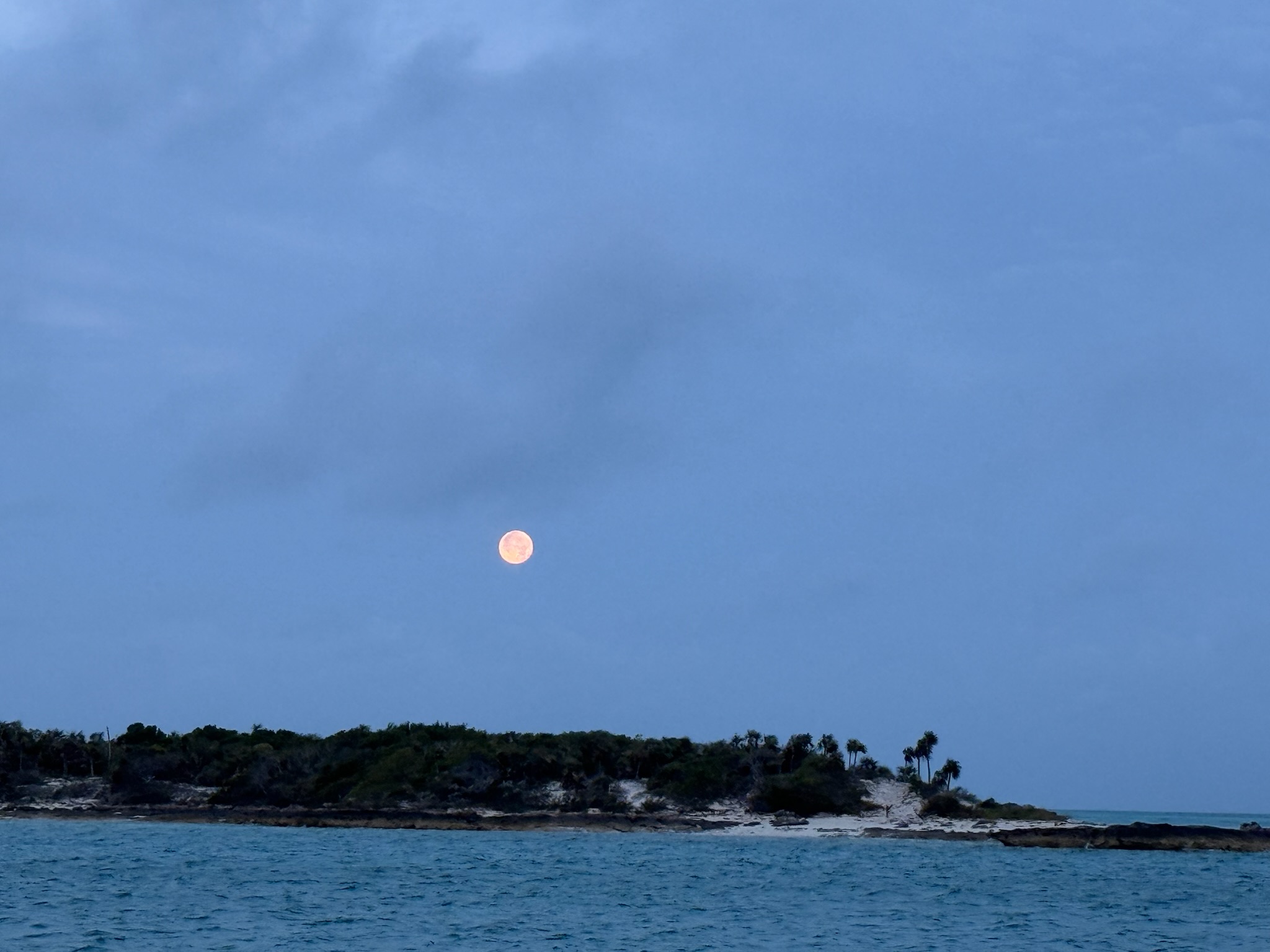
It rained lightly in the morning, but it was gloomy all day. The clouds were so dark they were almost black. It felt ominous… the coming rain was almost palpable. It was also windy. The wind was cold, but the air was incredibly humid, which made for a strange combination.
On Tuesday, Eric ran the AC for several hours, which made it much easier to function. We got through school and all the necessary life chores (ie cooking food, dishes, etc) before we turned the AC off and went back to being non-functional. We again stayed aboard all day, just biding our time until it was time to set off. At 1745, we brought in the flopper stopper. At 1800, we lifted anchor and headed out.
The seas were calm, and we were doing 6.2 knots at 1650 RPM. But the dark clouds and stifling humidity still made it feel ominous. We ran the A/C — it would have been miserable without it. By 1930, the weather was visible on the radar.
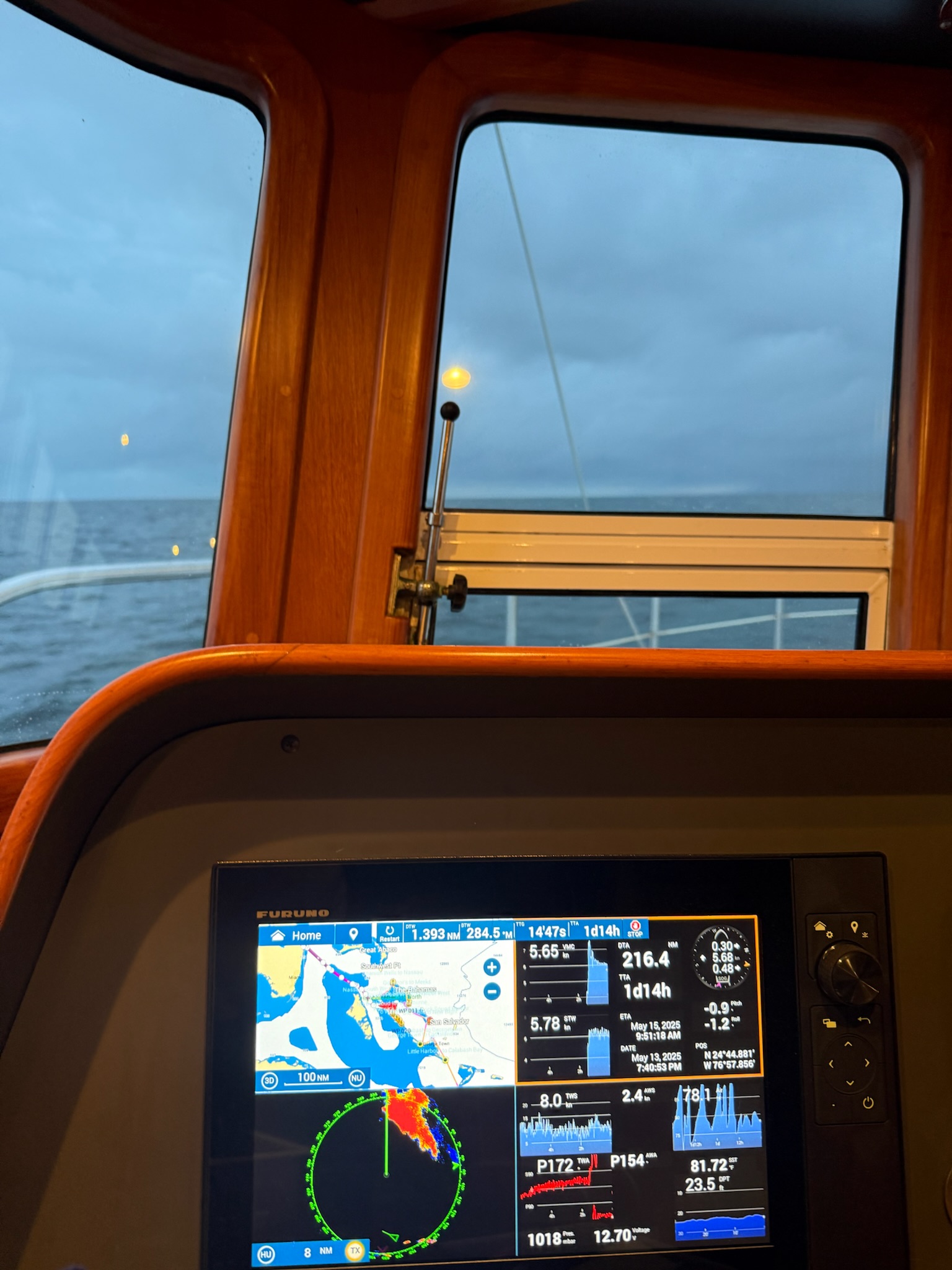
We made it out of the shallows of the Bahamas to the deeper waters of the ocean a little after midnight. We were relieved that we no longer had to worry about hitting bottom — for the most part anyways. Once in the ocean, we really picked up speed. Eric slowed us down to 1600 RPM, and we were still doing over 6 knots!
With the heavy cloud cover, it was a very black night. Throughout the wee hours of the morning, we’d occasionally see a bolt of lightning in the distance. The squall finally hit us at around 0800. We were engulfed in a very black cloud and heavy rain for an hour. Oddly enough, there was almost no wind.
The wind returned at around 1100. From there on out, it was mild head seas for the rest of day, with about 1 foot swells and 1 foot wind chop. It was enough motion to make the squeak come back, but not enough motion to be uncomfortable. While it was cloudy all day, it was normal grey clouds, not the ominous almost black clouds we’d had the previous couple of days. Our speeds were excellent even before we hit the Gulf Stream.
In the evening, the clouds dispersed and it was a mostly clear night. Since the moon was nearly full and the seas were mostly calm, the luminous moon was reflecting off the water, making the visibility incredible.
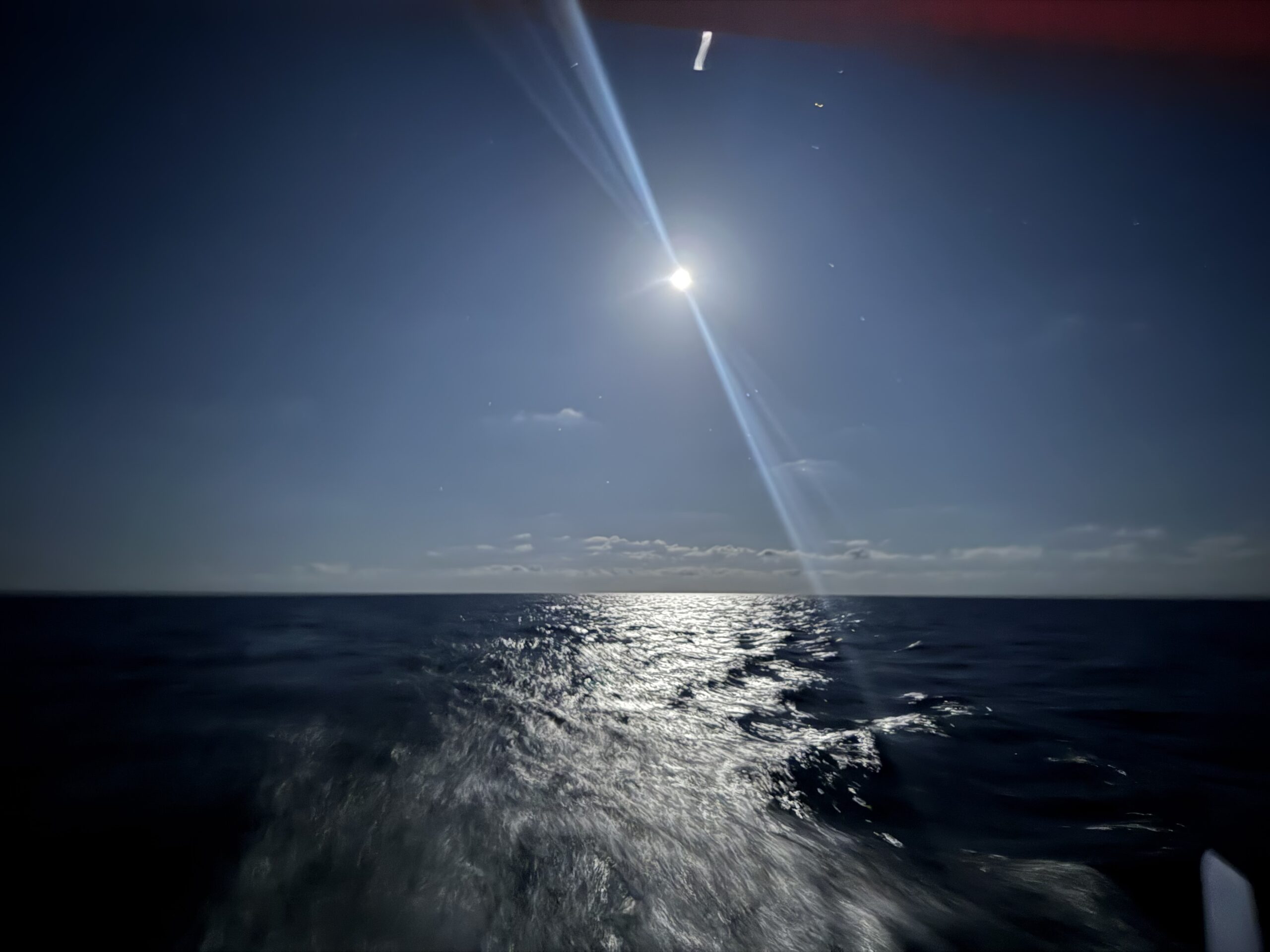
When we got to the Gulf Stream, we were flying! At 2000, Eric slowed us down to 1500 RPM, and we were still doing 6.4 knots! At midnight, Eric slowed us down again to 1450 RPM, and we were still doing 6.7 knots! At 0400, we were doing 6.9 knots at 1450!
When we were about 12-nm from US waters, Eric notified US Customs via their app that we were planning to enter the country.
Unsurprisingly, we reached the Palm Beach entrance to the Inter Coastal Waterway (ICW) earlier than planned. Our goal had been to arrive after sunrise, but we arrived at 0520, as dawn was just barely beginning. Eric found navigating out of the Gulf Stream to be challenging. He turned Kosmos the way he normally would to make a 90-degree turn to the port — and while Kosmos’s nose was indeed facing the correct direction, Kosmos was moving at more of a 45-degree angle! He found that he needed to increase the RPM to improve steerage.
While Eric was trying to maneuver Kosmos out of the Gulf Stream into the relatively narrow channel entrance, a 150-foot boat came out of the entrance. Eric talked to the other boat on the radio and coordinated how they would pass one another. Both adjusted course a little bit, however, they both kept twisting off their new courses due to the force of the current. Meanwhile, several small speed boats zoomed by, including one approximate 70 foot sport fisher that got really close and sent Kosmos rolling from a huge wake.
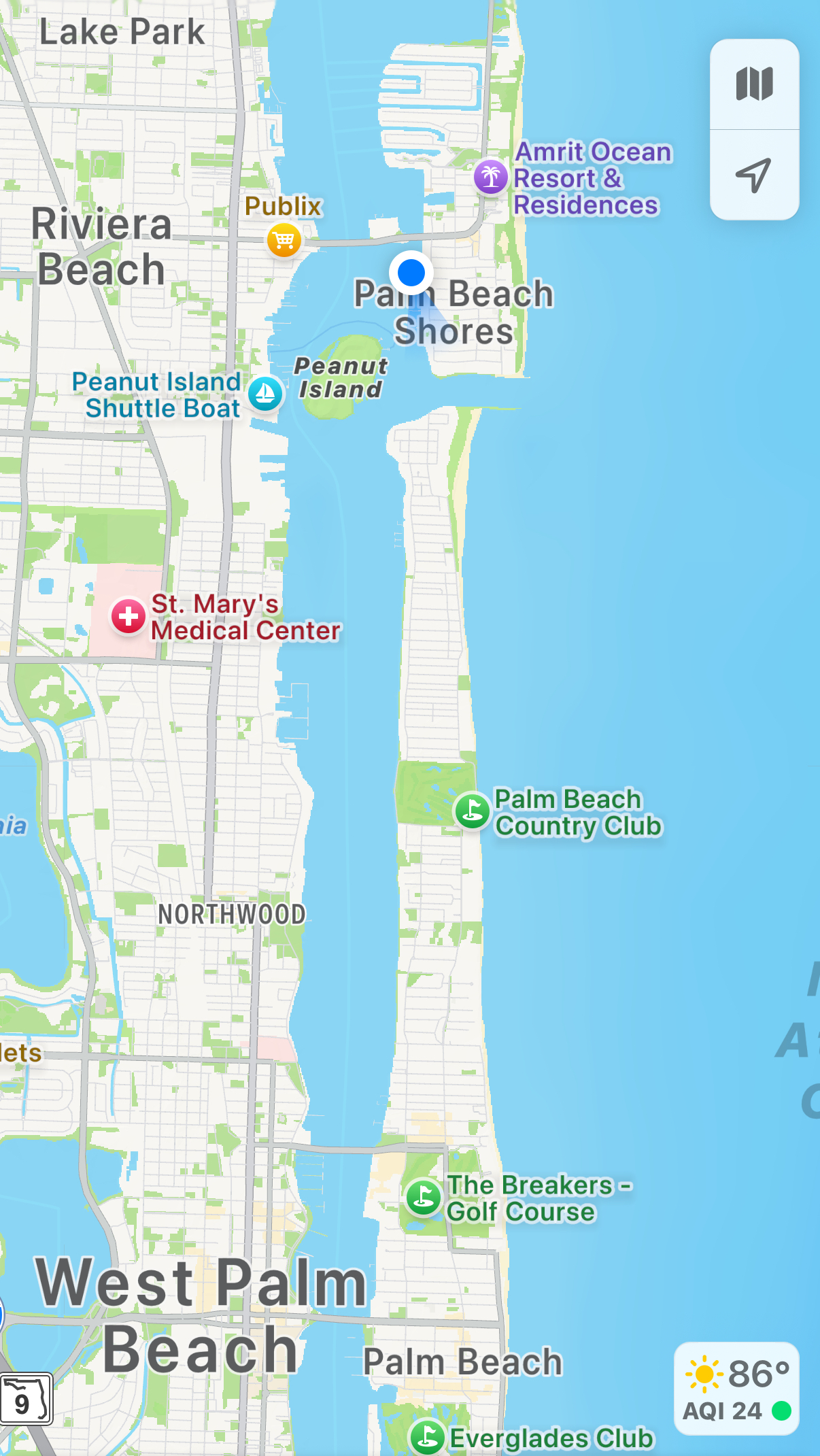
In good news, the navigational markers in the channel were well lit, the moon was bright and reflecting off the water, and dawn was beginning, so he felt safe entering. In more good news, the current slowed down as soon as Kosmos entered the channel.
Eric turned south, following the ICW… to be continued…
